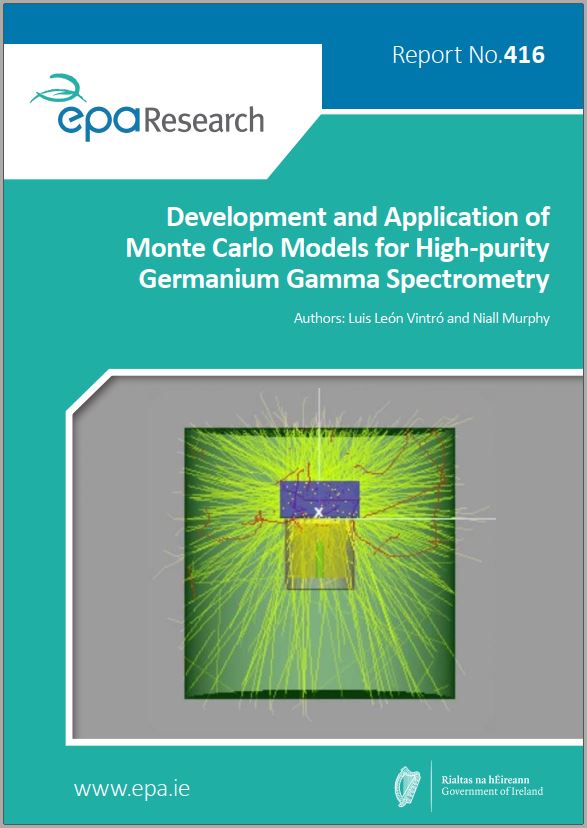Research 416: Development and Application of Monte Carlo Models for High-purity Germanium Gamma Spectrometry
Authors: Luis León Vintró and Niall Murphy
Summary: The aim of this research project was to develop and implement suitable Monte Carlo calibration methods for the assay of natural and artificial radionuclides using HPGe gamma spectrometers. A software application was developed as part of this project. The application makes use of a set of nominal input parameters describing an HPGe detector, together with experimentally determined full-energy peak efficiencies for a range of radionuclides in a variety of counting geometries, to produce an optimised model of the detector by applying suitable optimisation algorithms without any further user intervention.

Project Highlights
Watch the project highlights video
Identifying Pressures
The aim of this research project was to develop and implement suitable Monte Carlo calibration methods for the assay of natural and artificial radionuclides using HPGe gamma spectrometers, so that self-attenuation and true coincidence summing effects can be corrected for, and detector efficiencies established for a variety of geometries and sample matrices without the need to carry out multiple, time-consuming and expensive measurements using certified calibration standards.
The accurate detector models needed to conduct these Monte Carlo simulations to compute the required corrections were obtained for each of the detectors at the EPA’s radiometric laboratory using an automated software application based on GESPECOR. This is a dedicated Monte Carlo software package specifically developed for the efficiency calibration of HPGe gamma-ray spectrometers.
Informing Policy
The accurate calibration of the HPGe detectors in use at the EPA’s ORM radiometric laboratory and the development of robust, well-validated methods to correct for self-attenuation and true coincidence summing effects in gamma spectrometry are essential to fulfil the EPA’s advisory and information provision functions following an emergency under the National Emergency Plan for Nuclear Accidents (NEPNA) and the Major Emergency Framework (MEF) protocol for multi-agency response to a nuclear emergency.
Furthermore, given the importance of agriculture and aquaculture to the Irish economy, the ability to quickly produce accurate results in the aftermath of an accident, so that the levels can be assessed and compared with EU or international action levels in foodstuffs, is of significant national strategic importance.
Developing Solutions
A software application was developed as part of this project. The application makes use of a set of nominal input parameters describing an HPGe detector, together with experimentally determined full-energy peak efficiencies for a range of radionuclides in a variety of counting geometries, to produce an optimised model of the detector by applying suitable optimisation algorithms without any further user intervention.
Application of this optimisation approach to each of the HPGe detectors currently in operation at the EPA’s ORM has shown that it is possible to achieve excellent agreement between experimental full-energy peak efficiencies and Monte Carlo calculations, with mean absolute deviations between modelled and experimental efficiencies of < 2% for all geometries and individual absolute deviation no higher than 4%.
Through a comprehensive set of characterisation and validation experiments, it has been demonstrated that the optimised models obtained can be used to confidently predict full-energy peak efficiencies for arbitrary source geometries by direct Monte Carlo simulation, to perform efficiency transfer from one matrix to another and to compute accurate values for self-attenuation and true coincidence summing correction factors.
https://www.epa.ie/media/epa-2020/research/epa-funded-research/Report-cover-416.jpg